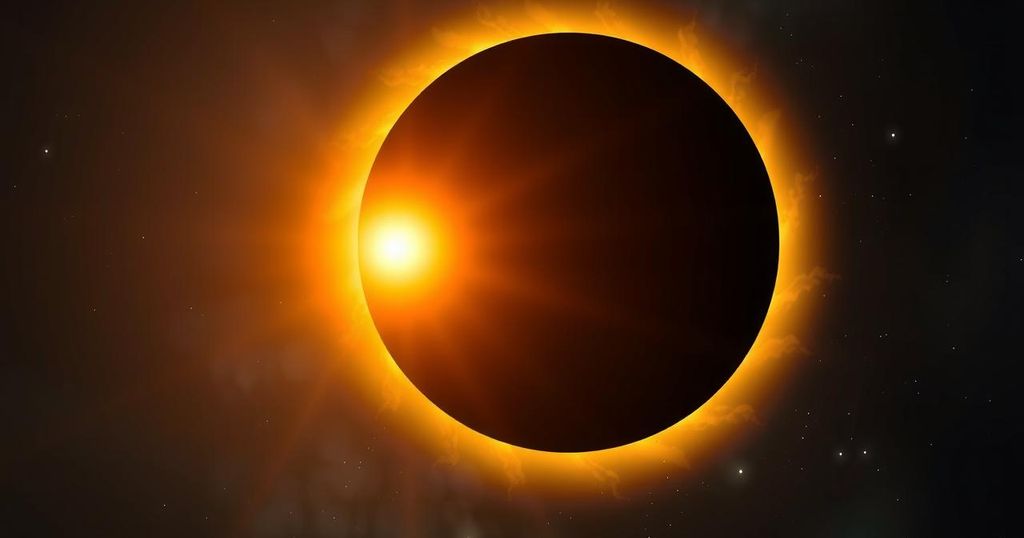Understanding the March 29 Partial Solar Eclipse: Visibility and Safety Tips

A partial solar eclipse will occur on March 29, 2023, predominantly visible in North America, Europe, Africa, and northern Asia. It will not be visible in India, but residents can watch live online. Eclipse timings vary globally, and safe viewing methods are essential to prevent eye damage.
On March 29, 2023, a partial solar eclipse will take place, primarily visible in parts of North America, Europe, Africa, and northern Asia. A solar eclipse occurs when the Moon obstructs sunlight from reaching Earth. This year’s eclipse will be partial since the alignment of the Sun, Moon, and Earth will not be perfect, meaning total obscuration of the Sun will not occur.
Unfortunately, India will not experience the eclipse directly; however, residents can still participate by watching live streams of the event online. The eclipse will primarily impact regions in the northern hemisphere and will not be visible from India’s vantage point.
Eclipse visibility timings vary by location, with many regions in North America experiencing it at sunrise. Meanwhile, western Europe and northwestern Africa will view the eclipse mid to late morning. According to Indian Standard Time (IST), the eclipse in regions where it is visible will begin at 2:20 PM, peak at 4:17 PM, and conclude by 6:13 PM, as reported by Indian Express.
It is crucial to prioritize safety when observing the eclipse, as directly viewing the Sun can harm eyesight. Using specialized solar viewing glasses or handheld solar viewers is recommended. Ordinary sunglasses do not provide adequate protection. Additionally, optical devices like cameras, telescopes, or binoculars should not be used without proper solar filters, as they can cause serious damage to eyesight due to focused solar rays.
In summary, the partial solar eclipse on March 29 will be visible in select parts of North America, Europe, Africa, and northern Asia, but not in India. Observers should take safety precautions using appropriate solar viewing equipment to avoid eye injury. Overall, this celestial event can still be enjoyed through online livestreams for those unable to view it directly.
Original Source: www.hindustantimes.com







